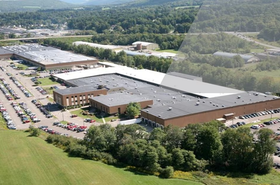Video conferencing company Zoom is reducing its reliance on the cloud.
As demand surged during the pandemic, the company was touted by both Amazon Web Services (AWS) and Oracle as a cloud success story, but is shifting back to colocation data centers in search of higher margins.
"Our data center strategy is to migrate more into the leased colocation data centers, decreasing our dependence on cloud services to support our customers," Zoom revealed in an ESG report.
"With that said, Zoom will always maintain some aspects of our production services supported by cloud services."
Alongside AWS and Oracle, a Form 10-K filing with the SEC reveals that Zoom also uses "Microsoft Azure for limited customer-specified managed services."
In the filing, the company said that it operates "29 colocated data centers worldwide," an increase from 17 in 2020. The ESG report notes that it has "additionally launched five ‘NextGen’ data centers overlapping some of the 29 existing markets," with a plan to "stand up the new NextGen data centers and then collapse the legacy facilities."
Zoom does not build its own data centers, but leases colocation space. Equinix manages around half of its facilities, with Digital Realty as the second largest provider.
Data center locations are not disclosed, but in its filing Zoom warned that facilities in the San Francisco Bay Area are at risk of seismic activity. The filing also discloses a Chinese data center.
"We plan to continue our practice of opening new colocated data centers throughout the world to meet increased demand," the filing states.
In a presentation at the KeyBanc Emerging Technology Summit this week, Zoom CFO Kelly Steckelberg said: "We have cloud providers that we work with, especially when you launch something new to make sure there's enough capacity, but then as quickly as possible getting that back into our data centers."
The company said doing so would improve margins, but that it was investing more in compute to serve more artificial intelligence workloads.







